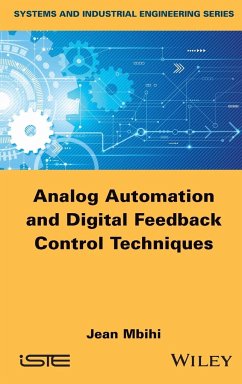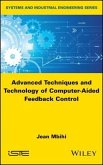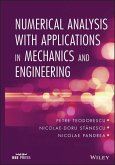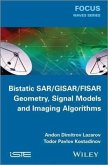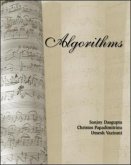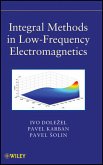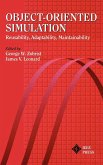Jean Mbihi
Analog Automation and Digital Feedback Control Techniques
Jean Mbihi
Analog Automation and Digital Feedback Control Techniques
- Gebundenes Buch
- Merkliste
- Auf die Merkliste
- Bewerten Bewerten
- Teilen
- Produkt teilen
- Produkterinnerung
- Produkterinnerung
This book covers various modern theoretical, technical, practical and technological aspects of computerized numerical control and control systems of deterministic and stochastic dynamical processes. Readers will discover: * A review of the fundamentals and results of the theory of analogue control systems * A clear and detailed presentation on the experimental modeling of dynamic processes * Frequency synthesis techniques and in the state space of digital control systems * Concrete applications of deterministic and stochastic optimal regulation laws * New multimedia platforms, training and…mehr
Andere Kunden interessierten sich auch für
![Advanced Techniques and Technology of Computer-Aided Feedback Control Advanced Techniques and Technology of Computer-Aided Feedback Control]() Jean MbihiAdvanced Techniques and Technology of Computer-Aided Feedback Control164,99 €
Jean MbihiAdvanced Techniques and Technology of Computer-Aided Feedback Control164,99 €![Differential Evolution Differential Evolution]() Anyong QingDifferential Evolution188,99 €
Anyong QingDifferential Evolution188,99 €![Numerical Analysis with Applications in Mechanics and Engineering Numerical Analysis with Applications in Mechanics and Engineering]() Petre TeodorescuNumerical Analysis with Applications in Mechanics and Engineering137,99 €
Petre TeodorescuNumerical Analysis with Applications in Mechanics and Engineering137,99 €![Bistatic Sar / Gisar / Fisar Geometry, Signal Models and Imaging Algorithms Bistatic Sar / Gisar / Fisar Geometry, Signal Models and Imaging Algorithms]() Andon Dimitrov LazarovBistatic Sar / Gisar / Fisar Geometry, Signal Models and Imaging Algorithms164,99 €
Andon Dimitrov LazarovBistatic Sar / Gisar / Fisar Geometry, Signal Models and Imaging Algorithms164,99 €![Algorithms Algorithms]() Sanjoy DasguptaAlgorithms57,99 €
Sanjoy DasguptaAlgorithms57,99 €![Integral Methods in Low-Frequency Electromagnetics Integral Methods in Low-Frequency Electromagnetics]() Pavel SolinIntegral Methods in Low-Frequency Electromagnetics138,99 €
Pavel SolinIntegral Methods in Low-Frequency Electromagnetics138,99 €![Object-Oriented Simulation Object-Oriented Simulation]() Object-Oriented Simulation210,99 €
Object-Oriented Simulation210,99 €-
-
-
This book covers various modern theoretical, technical, practical and technological aspects of computerized numerical control and control systems of deterministic and stochastic dynamical processes. Readers will discover: * A review of the fundamentals and results of the theory of analogue control systems * A clear and detailed presentation on the experimental modeling of dynamic processes * Frequency synthesis techniques and in the state space of digital control systems * Concrete applications of deterministic and stochastic optimal regulation laws * New multimedia platforms, training and experimental automated research * Various topologies and creation strategies, computer-aided telecontrol regulation systems, as well as a prototype of an automated laboratory that can be remotely operated via the Internet * Simple Matlab programs to reproduce, where necessary, the main numerical and graphical results presented * Many exercises corrected at the end of each chapter * Detailed studies of practical automation projects, aimed at consolidating the skills of the automation profession acquired in the book
Produktdetails
- Produktdetails
- Verlag: Wiley
- Seitenzahl: 256
- Erscheinungstermin: 8. Mai 2018
- Englisch
- Abmessung: 235mm x 157mm x 18mm
- Gewicht: 526g
- ISBN-13: 9781786302489
- ISBN-10: 1786302489
- Artikelnr.: 51311708
- Herstellerkennzeichnung
- Libri GmbH
- Europaallee 1
- 36244 Bad Hersfeld
- gpsr@libri.de
- Verlag: Wiley
- Seitenzahl: 256
- Erscheinungstermin: 8. Mai 2018
- Englisch
- Abmessung: 235mm x 157mm x 18mm
- Gewicht: 526g
- ISBN-13: 9781786302489
- ISBN-10: 1786302489
- Artikelnr.: 51311708
- Herstellerkennzeichnung
- Libri GmbH
- Europaallee 1
- 36244 Bad Hersfeld
- gpsr@libri.de
Jean Mbihi, University of Douala, Cameroon.
Preface ix Introduction xiii Part 1. Analog Feedback Control Systems 1 Chapter 1. Models of Dynamic Processes 3 1.1. Introduction to dynamic processes 3 1.1.1. Definition, hypotheses and notations 3 1.1.2. Implications of hypotheses 4 1.1.3. Dynamic model: an automation perspective 5 1.2. Transfer functions 6 1.2.1. Existence conditions 6 1.2.2. Construction 6 1.2.3. General structure of a transfer function 8 1.2.4. Tools for the analysis of the properties of transfer functions 8 1.2.5. First- and second-order transfer functions 8 1.3. State models 12 1.3.1. Definition 12 1.3.2. Illustrative example 13 1.3.3. General structure of the state model 14 1.4. Linear state models with constant parameters 15 1.4.1. Linearization-based construction 15 1.4.2. Structure of a linear state model with constant parameters 16 1.4.3. Properties of a model without pure input delay (
0 = 0) 18 1.5. Similarity transformation 20 1.6. Exercises and solutions 21 Chapter 2. Experimental Modeling Approach of Dynamic Processes 39 2.1. Introduction to experimental modeling 39 2.1.1. Problem statement 39 2.1.2. Principle of experimental modeling 39 2.1.3. Experimental modeling methodology 40 2.2. Step response-based modeling 44 2.2.1. Model of order 1 44 2.2.2. Under-damped model of order 2 (
< 1) 44 2.2.3. Damped model of order
2 (Strejc method) 46 2.3. Frequency response-based modeling 50 2.4. Modeling based on ARMA model 52 2.4.1. ARMA model 52 2.4.2. Parameter estimation of an ARMA model 54 2.5. Matlab-aided experimental modeling 56 2.6. Exercises and solutions 58 Chapter 3. Review of Analog Feedback Control Systems 73 3.1. Open-loop analog control 73 3.1.1. Principle 73 3.1.2. Open-loop control 74 3.2. Analog control system 74 3.3. Performances of an analog control system 75 3.3.1. Closed-loop transfer functions 75 3.3.2. Performance quantities 76 3.4. Simple analog controllers 76 3.5. PID/PIDF controllers 77 3.5.1. Structure and role of the parameters of a PID/PIDF controller 77 3.5.2. Ziegler-Nichols methods for parameter calculation 79 3.5.3. Calculation of parameters by pole placement 79 3.5.4. Direct calculation of optimal PID parameters 81 3.5.5. LQR-based indirect calculation of optimal PID parameters 85 3.5.6. Implementation of analog controllers 85 3.6. Controllers described in the state space 86 3.6.1. Principle and block diagram of a linear state feedback 86 3.6.2. Techniques for calculating the state feedback gain 87 3.6.3. Integral action state feedback 88 3.6.4. State feedback with integral action and observer 90 3.6.5. State feedback with output error compensator 92 3.7. Principle of equivalence between PID and LQR controllers 92 3.7.1. Proof of the equivalence principle 93 3.7.2. Equivalence relation 96 3.7.3. Case study 96 3.8. Exercises and solutions 99 Part 2. Synthesis and Computer-aided Simulation of Digital Feedback Control Systems 123 Chapter 4. Synthesis of Digital Feedback Control Systems in the Frequency Domain 125 4.1. Synthesis methodology 125 4.2. Transfer function G(z) of a dynamic process 125 4.2.1. Sampled dynamic model 125 4.2.2. Discretization of Gc(p) if input delay
0 = 0 126 4.2.3. Discretization of Gc(s) if input delay
0 # 0 128 4.2.4. Examples of calculation of G(z) by discretization of Gc(s) 132 4.3. Transfer function D(z): discretization method 136 4.3.1. Interest of discretization 136 4.3.2. Discretization of Dc(s) by invariance methods 137 4.3.3. Discretization of Dc(s) by transformation methods 139 4.3.4. z-Transfer functions of simple controllers 142 4.3.5. General structure of D(z) and recurrence equation 144 4.3.6. Discretization of transfer functions with Matlab 145 4.4. Transfer function D(z): model method 146 4.4.1. Principle of the model method 146 4.4.2. Examples of direct design of digital controllers 146 4.4.3. Conditions for the use of model approach 148 4.4.4. Practical rules for using the model approach 149 4.5. Discrete block diagram of digital control 150 4.5.1. Closed-loop characteristic transfer functions 151 4.5.2. Sampling frequency 152 4.6. Exercises and solutions 154 Chapter 5. Computer-aided Simulation of Digital Feedback Control Systems 177 5.1. Approaches to computer-aided simulation 177 5.2. Programming of joint recurrence equations 178 5.2.1. Formulation 178 5.2.2. Example of Matlab® programming 179 5.3. Simulation using Matlab macro programming 183 5.4. Graphic simulation 186 5.5. Case study: simulation of servomechanisms 187 5.5.1. Simulation of a speed servomechanism 187 5.5.2. Simulation of a position servomechanism 191 5.6. Exercises and solutions 194 Chapter 6. Discrete State Models of Dynamic Processes 199 6.1. Discretization of the state model of a dynamic process 199 6.1.1. Discretization of a state model 200 6.1.2. Discretization of a state model with input delay 201 6.2. Calculation of {A, B, C, D} parameters of a discrete state model 204 6.2.1. Calculation of A = eAT 204 6.2.2. Calculation of B 206 6.2.3. Calculation of C and D 208 6.3. Properties of a discrete state model {A, B, C, D} 208 6.3.1. Infinity of state models of one dynamic process 208 6.3.2. Stability 209 6.3.3. Controllability and stabilizability 209 6.3.4. Observability and detectability 210 6.4. Exercises and solutions 210 Appendices 215 Appendix 1. Table of Z-transforms 217 Appendix 2. Matlab® Elements Used in This Book 219 Bibliography 223 Index 227
0 = 0) 18 1.5. Similarity transformation 20 1.6. Exercises and solutions 21 Chapter 2. Experimental Modeling Approach of Dynamic Processes 39 2.1. Introduction to experimental modeling 39 2.1.1. Problem statement 39 2.1.2. Principle of experimental modeling 39 2.1.3. Experimental modeling methodology 40 2.2. Step response-based modeling 44 2.2.1. Model of order 1 44 2.2.2. Under-damped model of order 2 (
< 1) 44 2.2.3. Damped model of order
2 (Strejc method) 46 2.3. Frequency response-based modeling 50 2.4. Modeling based on ARMA model 52 2.4.1. ARMA model 52 2.4.2. Parameter estimation of an ARMA model 54 2.5. Matlab-aided experimental modeling 56 2.6. Exercises and solutions 58 Chapter 3. Review of Analog Feedback Control Systems 73 3.1. Open-loop analog control 73 3.1.1. Principle 73 3.1.2. Open-loop control 74 3.2. Analog control system 74 3.3. Performances of an analog control system 75 3.3.1. Closed-loop transfer functions 75 3.3.2. Performance quantities 76 3.4. Simple analog controllers 76 3.5. PID/PIDF controllers 77 3.5.1. Structure and role of the parameters of a PID/PIDF controller 77 3.5.2. Ziegler-Nichols methods for parameter calculation 79 3.5.3. Calculation of parameters by pole placement 79 3.5.4. Direct calculation of optimal PID parameters 81 3.5.5. LQR-based indirect calculation of optimal PID parameters 85 3.5.6. Implementation of analog controllers 85 3.6. Controllers described in the state space 86 3.6.1. Principle and block diagram of a linear state feedback 86 3.6.2. Techniques for calculating the state feedback gain 87 3.6.3. Integral action state feedback 88 3.6.4. State feedback with integral action and observer 90 3.6.5. State feedback with output error compensator 92 3.7. Principle of equivalence between PID and LQR controllers 92 3.7.1. Proof of the equivalence principle 93 3.7.2. Equivalence relation 96 3.7.3. Case study 96 3.8. Exercises and solutions 99 Part 2. Synthesis and Computer-aided Simulation of Digital Feedback Control Systems 123 Chapter 4. Synthesis of Digital Feedback Control Systems in the Frequency Domain 125 4.1. Synthesis methodology 125 4.2. Transfer function G(z) of a dynamic process 125 4.2.1. Sampled dynamic model 125 4.2.2. Discretization of Gc(p) if input delay
0 = 0 126 4.2.3. Discretization of Gc(s) if input delay
0 # 0 128 4.2.4. Examples of calculation of G(z) by discretization of Gc(s) 132 4.3. Transfer function D(z): discretization method 136 4.3.1. Interest of discretization 136 4.3.2. Discretization of Dc(s) by invariance methods 137 4.3.3. Discretization of Dc(s) by transformation methods 139 4.3.4. z-Transfer functions of simple controllers 142 4.3.5. General structure of D(z) and recurrence equation 144 4.3.6. Discretization of transfer functions with Matlab 145 4.4. Transfer function D(z): model method 146 4.4.1. Principle of the model method 146 4.4.2. Examples of direct design of digital controllers 146 4.4.3. Conditions for the use of model approach 148 4.4.4. Practical rules for using the model approach 149 4.5. Discrete block diagram of digital control 150 4.5.1. Closed-loop characteristic transfer functions 151 4.5.2. Sampling frequency 152 4.6. Exercises and solutions 154 Chapter 5. Computer-aided Simulation of Digital Feedback Control Systems 177 5.1. Approaches to computer-aided simulation 177 5.2. Programming of joint recurrence equations 178 5.2.1. Formulation 178 5.2.2. Example of Matlab® programming 179 5.3. Simulation using Matlab macro programming 183 5.4. Graphic simulation 186 5.5. Case study: simulation of servomechanisms 187 5.5.1. Simulation of a speed servomechanism 187 5.5.2. Simulation of a position servomechanism 191 5.6. Exercises and solutions 194 Chapter 6. Discrete State Models of Dynamic Processes 199 6.1. Discretization of the state model of a dynamic process 199 6.1.1. Discretization of a state model 200 6.1.2. Discretization of a state model with input delay 201 6.2. Calculation of {A, B, C, D} parameters of a discrete state model 204 6.2.1. Calculation of A = eAT 204 6.2.2. Calculation of B 206 6.2.3. Calculation of C and D 208 6.3. Properties of a discrete state model {A, B, C, D} 208 6.3.1. Infinity of state models of one dynamic process 208 6.3.2. Stability 209 6.3.3. Controllability and stabilizability 209 6.3.4. Observability and detectability 210 6.4. Exercises and solutions 210 Appendices 215 Appendix 1. Table of Z-transforms 217 Appendix 2. Matlab® Elements Used in This Book 219 Bibliography 223 Index 227
Preface ix Introduction xiii Part 1. Analog Feedback Control Systems 1 Chapter 1. Models of Dynamic Processes 3 1.1. Introduction to dynamic processes 3 1.1.1. Definition, hypotheses and notations 3 1.1.2. Implications of hypotheses 4 1.1.3. Dynamic model: an automation perspective 5 1.2. Transfer functions 6 1.2.1. Existence conditions 6 1.2.2. Construction 6 1.2.3. General structure of a transfer function 8 1.2.4. Tools for the analysis of the properties of transfer functions 8 1.2.5. First- and second-order transfer functions 8 1.3. State models 12 1.3.1. Definition 12 1.3.2. Illustrative example 13 1.3.3. General structure of the state model 14 1.4. Linear state models with constant parameters 15 1.4.1. Linearization-based construction 15 1.4.2. Structure of a linear state model with constant parameters 16 1.4.3. Properties of a model without pure input delay (
0 = 0) 18 1.5. Similarity transformation 20 1.6. Exercises and solutions 21 Chapter 2. Experimental Modeling Approach of Dynamic Processes 39 2.1. Introduction to experimental modeling 39 2.1.1. Problem statement 39 2.1.2. Principle of experimental modeling 39 2.1.3. Experimental modeling methodology 40 2.2. Step response-based modeling 44 2.2.1. Model of order 1 44 2.2.2. Under-damped model of order 2 (
< 1) 44 2.2.3. Damped model of order
2 (Strejc method) 46 2.3. Frequency response-based modeling 50 2.4. Modeling based on ARMA model 52 2.4.1. ARMA model 52 2.4.2. Parameter estimation of an ARMA model 54 2.5. Matlab-aided experimental modeling 56 2.6. Exercises and solutions 58 Chapter 3. Review of Analog Feedback Control Systems 73 3.1. Open-loop analog control 73 3.1.1. Principle 73 3.1.2. Open-loop control 74 3.2. Analog control system 74 3.3. Performances of an analog control system 75 3.3.1. Closed-loop transfer functions 75 3.3.2. Performance quantities 76 3.4. Simple analog controllers 76 3.5. PID/PIDF controllers 77 3.5.1. Structure and role of the parameters of a PID/PIDF controller 77 3.5.2. Ziegler-Nichols methods for parameter calculation 79 3.5.3. Calculation of parameters by pole placement 79 3.5.4. Direct calculation of optimal PID parameters 81 3.5.5. LQR-based indirect calculation of optimal PID parameters 85 3.5.6. Implementation of analog controllers 85 3.6. Controllers described in the state space 86 3.6.1. Principle and block diagram of a linear state feedback 86 3.6.2. Techniques for calculating the state feedback gain 87 3.6.3. Integral action state feedback 88 3.6.4. State feedback with integral action and observer 90 3.6.5. State feedback with output error compensator 92 3.7. Principle of equivalence between PID and LQR controllers 92 3.7.1. Proof of the equivalence principle 93 3.7.2. Equivalence relation 96 3.7.3. Case study 96 3.8. Exercises and solutions 99 Part 2. Synthesis and Computer-aided Simulation of Digital Feedback Control Systems 123 Chapter 4. Synthesis of Digital Feedback Control Systems in the Frequency Domain 125 4.1. Synthesis methodology 125 4.2. Transfer function G(z) of a dynamic process 125 4.2.1. Sampled dynamic model 125 4.2.2. Discretization of Gc(p) if input delay
0 = 0 126 4.2.3. Discretization of Gc(s) if input delay
0 # 0 128 4.2.4. Examples of calculation of G(z) by discretization of Gc(s) 132 4.3. Transfer function D(z): discretization method 136 4.3.1. Interest of discretization 136 4.3.2. Discretization of Dc(s) by invariance methods 137 4.3.3. Discretization of Dc(s) by transformation methods 139 4.3.4. z-Transfer functions of simple controllers 142 4.3.5. General structure of D(z) and recurrence equation 144 4.3.6. Discretization of transfer functions with Matlab 145 4.4. Transfer function D(z): model method 146 4.4.1. Principle of the model method 146 4.4.2. Examples of direct design of digital controllers 146 4.4.3. Conditions for the use of model approach 148 4.4.4. Practical rules for using the model approach 149 4.5. Discrete block diagram of digital control 150 4.5.1. Closed-loop characteristic transfer functions 151 4.5.2. Sampling frequency 152 4.6. Exercises and solutions 154 Chapter 5. Computer-aided Simulation of Digital Feedback Control Systems 177 5.1. Approaches to computer-aided simulation 177 5.2. Programming of joint recurrence equations 178 5.2.1. Formulation 178 5.2.2. Example of Matlab® programming 179 5.3. Simulation using Matlab macro programming 183 5.4. Graphic simulation 186 5.5. Case study: simulation of servomechanisms 187 5.5.1. Simulation of a speed servomechanism 187 5.5.2. Simulation of a position servomechanism 191 5.6. Exercises and solutions 194 Chapter 6. Discrete State Models of Dynamic Processes 199 6.1. Discretization of the state model of a dynamic process 199 6.1.1. Discretization of a state model 200 6.1.2. Discretization of a state model with input delay 201 6.2. Calculation of {A, B, C, D} parameters of a discrete state model 204 6.2.1. Calculation of A = eAT 204 6.2.2. Calculation of B 206 6.2.3. Calculation of C and D 208 6.3. Properties of a discrete state model {A, B, C, D} 208 6.3.1. Infinity of state models of one dynamic process 208 6.3.2. Stability 209 6.3.3. Controllability and stabilizability 209 6.3.4. Observability and detectability 210 6.4. Exercises and solutions 210 Appendices 215 Appendix 1. Table of Z-transforms 217 Appendix 2. Matlab® Elements Used in This Book 219 Bibliography 223 Index 227
0 = 0) 18 1.5. Similarity transformation 20 1.6. Exercises and solutions 21 Chapter 2. Experimental Modeling Approach of Dynamic Processes 39 2.1. Introduction to experimental modeling 39 2.1.1. Problem statement 39 2.1.2. Principle of experimental modeling 39 2.1.3. Experimental modeling methodology 40 2.2. Step response-based modeling 44 2.2.1. Model of order 1 44 2.2.2. Under-damped model of order 2 (
< 1) 44 2.2.3. Damped model of order
2 (Strejc method) 46 2.3. Frequency response-based modeling 50 2.4. Modeling based on ARMA model 52 2.4.1. ARMA model 52 2.4.2. Parameter estimation of an ARMA model 54 2.5. Matlab-aided experimental modeling 56 2.6. Exercises and solutions 58 Chapter 3. Review of Analog Feedback Control Systems 73 3.1. Open-loop analog control 73 3.1.1. Principle 73 3.1.2. Open-loop control 74 3.2. Analog control system 74 3.3. Performances of an analog control system 75 3.3.1. Closed-loop transfer functions 75 3.3.2. Performance quantities 76 3.4. Simple analog controllers 76 3.5. PID/PIDF controllers 77 3.5.1. Structure and role of the parameters of a PID/PIDF controller 77 3.5.2. Ziegler-Nichols methods for parameter calculation 79 3.5.3. Calculation of parameters by pole placement 79 3.5.4. Direct calculation of optimal PID parameters 81 3.5.5. LQR-based indirect calculation of optimal PID parameters 85 3.5.6. Implementation of analog controllers 85 3.6. Controllers described in the state space 86 3.6.1. Principle and block diagram of a linear state feedback 86 3.6.2. Techniques for calculating the state feedback gain 87 3.6.3. Integral action state feedback 88 3.6.4. State feedback with integral action and observer 90 3.6.5. State feedback with output error compensator 92 3.7. Principle of equivalence between PID and LQR controllers 92 3.7.1. Proof of the equivalence principle 93 3.7.2. Equivalence relation 96 3.7.3. Case study 96 3.8. Exercises and solutions 99 Part 2. Synthesis and Computer-aided Simulation of Digital Feedback Control Systems 123 Chapter 4. Synthesis of Digital Feedback Control Systems in the Frequency Domain 125 4.1. Synthesis methodology 125 4.2. Transfer function G(z) of a dynamic process 125 4.2.1. Sampled dynamic model 125 4.2.2. Discretization of Gc(p) if input delay
0 = 0 126 4.2.3. Discretization of Gc(s) if input delay
0 # 0 128 4.2.4. Examples of calculation of G(z) by discretization of Gc(s) 132 4.3. Transfer function D(z): discretization method 136 4.3.1. Interest of discretization 136 4.3.2. Discretization of Dc(s) by invariance methods 137 4.3.3. Discretization of Dc(s) by transformation methods 139 4.3.4. z-Transfer functions of simple controllers 142 4.3.5. General structure of D(z) and recurrence equation 144 4.3.6. Discretization of transfer functions with Matlab 145 4.4. Transfer function D(z): model method 146 4.4.1. Principle of the model method 146 4.4.2. Examples of direct design of digital controllers 146 4.4.3. Conditions for the use of model approach 148 4.4.4. Practical rules for using the model approach 149 4.5. Discrete block diagram of digital control 150 4.5.1. Closed-loop characteristic transfer functions 151 4.5.2. Sampling frequency 152 4.6. Exercises and solutions 154 Chapter 5. Computer-aided Simulation of Digital Feedback Control Systems 177 5.1. Approaches to computer-aided simulation 177 5.2. Programming of joint recurrence equations 178 5.2.1. Formulation 178 5.2.2. Example of Matlab® programming 179 5.3. Simulation using Matlab macro programming 183 5.4. Graphic simulation 186 5.5. Case study: simulation of servomechanisms 187 5.5.1. Simulation of a speed servomechanism 187 5.5.2. Simulation of a position servomechanism 191 5.6. Exercises and solutions 194 Chapter 6. Discrete State Models of Dynamic Processes 199 6.1. Discretization of the state model of a dynamic process 199 6.1.1. Discretization of a state model 200 6.1.2. Discretization of a state model with input delay 201 6.2. Calculation of {A, B, C, D} parameters of a discrete state model 204 6.2.1. Calculation of A = eAT 204 6.2.2. Calculation of B 206 6.2.3. Calculation of C and D 208 6.3. Properties of a discrete state model {A, B, C, D} 208 6.3.1. Infinity of state models of one dynamic process 208 6.3.2. Stability 209 6.3.3. Controllability and stabilizability 209 6.3.4. Observability and detectability 210 6.4. Exercises and solutions 210 Appendices 215 Appendix 1. Table of Z-transforms 217 Appendix 2. Matlab® Elements Used in This Book 219 Bibliography 223 Index 227

